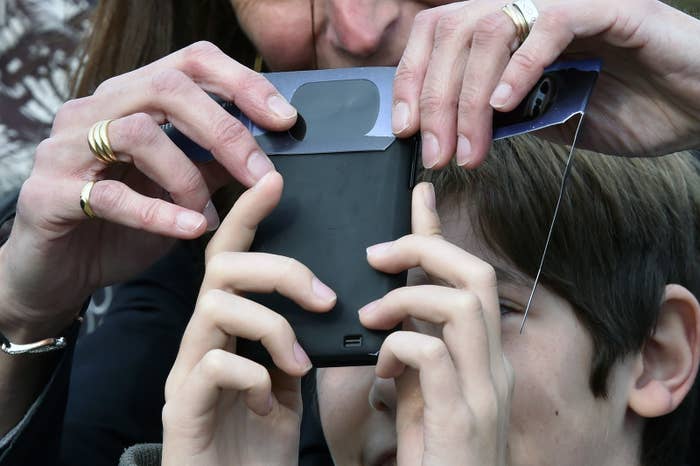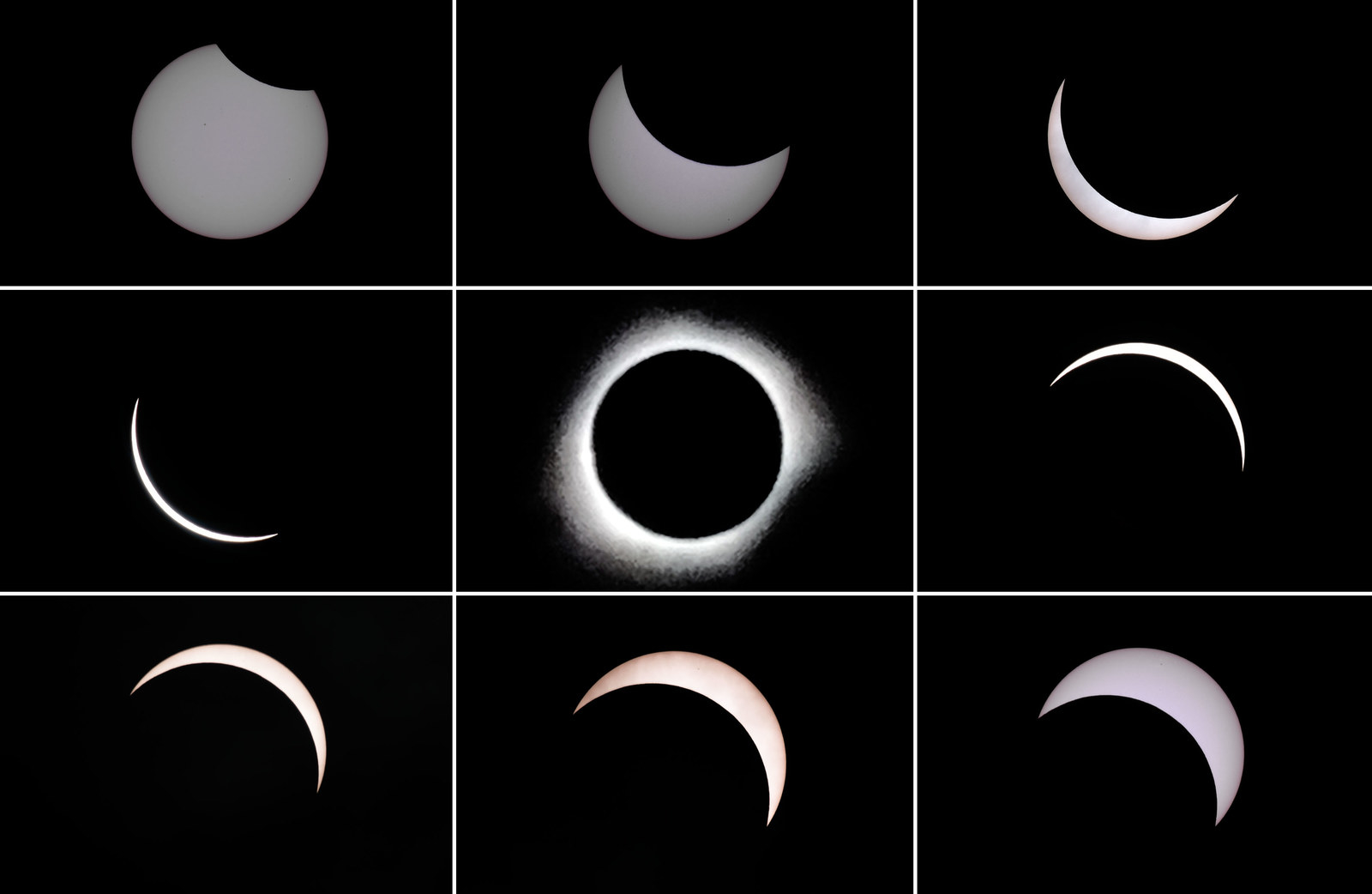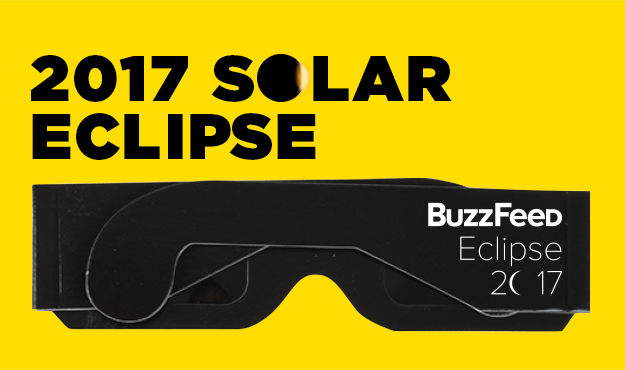
If you want to capture a full eclipse, make your way to the “path of totality.”
The first thing you want to do is make sure you’re in the right place. Across 12 states from Oregon to South Carolina, a 70-mile-wide strip called the path of totality will experience a total solar eclipse on Monday Aug. 21, with the moon almost fully blocking the sun.
If you’re on that path, you’ll be able to photograph the eclipse, which will look like a ring of light (the sun’s atmosphere, or corona) around the moon’s shadow. If you’re not on the path, you’ll be able to see a partial eclipse (as long you’re in the continental US, Canada, or Mexico), which will look like a big chunk is missing from the sun. This interactive NASA map shows when the eclipse is slated to start, and how long it will last during the point of maximum eclipse for your location.
Hopefully, you’ve already made your travel plans. Cities on the eclipse’s path are expecting a huge influx of travelers for the event.
Pro-tip: Get to your site early (days in advance, even!), and do as much preparation and setup as you can, so you can enjoy the eclipse with your own eyeballs (protected, of course, by eclipse glasses), instead of through the lens of your camera.
Get the right safety gear, for you and for your camera.
For you: When you’re taking pictures — or generally on your smartphone — it’s easy to forget about what’s happening around you and focus solely on getting a great shot. Generally, you should always be aware of your surroundings — but during the eclipse, ignoring safety protocol could mean serious, permanent eye damage.
Wherever you are, make sure you have eclipse glasses. They have especially dark lenses that protect the part of your retina that helps you see detail at the center of your vision, which is especially susceptible to the sun’s ultrabright rays.
Be careful. Lots of glasses marketed for the eclipse don’t comply with ISO 12312-2 safety standards. Make sure you grab a pair that are ISO-rated.

For your camera: The same goes for pointing your phone’s lens directly at the sun. “It is going to be an awful lot of light concentrated on a limited number of pixels,” said Sten Odenwald, an astronomer and director of citizen science at NASA. “If you point your smartphone at the sun for a period of time, you may get a permanent blemish on the image sensor where the sun disc was fully exposed, especially on older generation phones.”
To prevent injuring your camera’s sensor, you can use what’s called a solar filter. “A simple solar filter that covers the front of the lens is all you need,” according to Todd Vorenkamp, a photographer and B&H Photo writer, who has been taking night and lunar shots for nearly 30 years. “There’s also a class called the intermediate filter, for advanced study of the sun, but those are usually very expensive and are used by scientists.”
There’s a $100 eclipse-friendly lens kit designed specifically for phones, but you could also fashion your lens protector with a much cheaper filter sheet, and make your own with some cardboard and tape. You could also get an additional pair of solar eclipse glasses, which is sufficient for covering most phone-camera lenses.
Never look at a partially eclipsed sun without solar filters or solar glasses. For those on the path of the eclipse, the only time it is safe to look at, or point your phone at, the eclipse without protective gear is during totality (which will last less than two minutes), when the moon has completely covered the sun. The Eclipse Megamovie app (free, iOS and Android) includes an in-app camera that will tell you when the eclipse has reached totality and it’s safe to remove your solar filter, and when you need to put your solar glasses and filter back on, during the partial eclipse.

If you’re using your phone, here’s the truth: your photo isn’t going to look amazing.
As advanced as smartphone cameras have gotten, they’re still not powerful enough to capture something as far away as the sun and moon with a lot of detail.
“The sun’s very small in the sky. It doesn’t seem that way, because it’s so bright,” said Vorenkamp. “The other disadvantage with smartphones is that you don’t have a lot of control of the exposure. If you’re trying to photograph totality, your phone is going to crank up your ISO, and you’re not going to get a good shot.”
A solar filter will help your shot look less like a bright white orb and show more detail of the moon passing before the sun.
Your best chance at a decent phone shot is using a telephoto lens (with a solar filter!) and a tripod.
The key to getting a great astronomical photograph is a) zoom, and b) stability. But whatever you do, don’t pinch to zoom.
“When you pinch to zoom, you’re going to lose quality,” said Erica Simas, a Seattle-based photographer and content coordinator at Moment, a company that makes mobile photography accessories. “When you use digital zoom [pinching] versus optical zoom [an external lens], it will drop your image quality. Anybody who is looking to capture the eclipse should consider having a telephoto lens for their phone.”
Those with the iPhone 7 Plus have a second lens that provides two times the optical zoom and may not need the extra accessory, but for those who don’t have a 7 Plus, Simas suggests Moment’s Tele Lens ($100) which can double the zoom on the iPhone's or Google Pixel’s lenses. This telephoto lens for iPhone ($35) and this universal one for Android ($20) are also great.
But be wary of the dangers when using a telephoto lens: “The big caution is that you can’t use that telephoto on the uneclipsed sun, because you can burn out the lens on your camera,” warned NASA’s Odenwald. “Get a solar filter and put that in front of the telephoto lens, but do not put it in between the telephoto and camera lens. These filters are likely gelatin, and would melt pretty quickly.”
With a zoom lens, your phone will need to be super stable, so use a tripod and set your shutter on timer, so the tripod will have a chance to stop moving before it captures the scene — any shaking will make the image look blurry. Simas recommends the MeFoto Sidekick 360 ($30): “You can use it to screw your phone onto any tripod, so it’s really convenient if you already have one handy.”
Also: Shoot in RAW if possible, so you can edit the full resolution file (instead of the compressed JPEG file).
When you take a photo, your camera app will probably save that image as a JPEG file, which is compressed, so it doesn’t take up as much storage. According to Simas, you’ll want to shoot in RAW, so you can edit your image without losing image quality. Because you can’t shoot in RAW through your phone’s default camera app, use Manual ($4) or Moment (free) for iPhone, and Manual Camera ($2.99) for Android.
For editing, “I recommend VSCO [free, iOS and Android]. They allow you to import in RAW and edit in RAW, and make it really easy for quick post-processing,” advised Simas.
Think about alternative ways of capturing the event.
Since millions of others are going to be shooting the actual eclipse event — and, for many folks, the eclipse will be too high in the sky to include anyone or thing in the foreground — think about other ways to capture the moment.
“I want to get my kids wearing glasses, and focus on their reactions when the full sun becomes a shadow,” said Ohio-based photographer Eric Ward, who will be off the path of totality. Unlike other photographers, who will attempt to get a tight shot of the eclipse, Ward is going to take photo and videos of reactions on the ground, and use a drone to capture the wider landscape.
NASA’s Odenwald also suggests using some kind of secondary lighting, like a handheld light, to illuminate people in the foreground during totality: “It’ll look like twilight, so try compositions before that low light sets in. The eclipse is going to be so high in some places, about 60 degrees above the horizon, that it will be difficult to see anything around it to help with the composition of the photo.”
The tl;dr is: Don’t spend a lot of time fussing with your camera. Enjoy this rare event with your own eyes — not through your phone screen.
The event will last three hours (so bring water!), but the actual eclipse, when the moon completely blocks the sun, will only last under two minutes. That’s not a lot of time to mess with settings and run out to get the perfect shot. If you can, do all the set up beforehand, and leave your video camera running or take a couple of photos, then put your camera away so you can actually enjoy it!
And remember the golden rule: There are going to be huge crowds. Respect other folks’ space.
Vorenkamp urges all photographers to follow the golden rule: “If you don’t want someone to block your view, don’t block theirs.”

